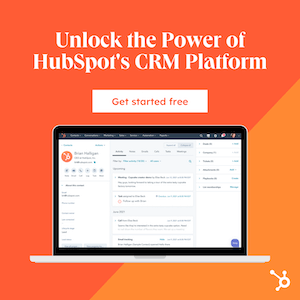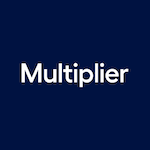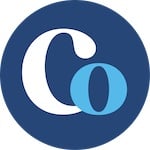Choosing between SaaS & Custom Software can feel like standing at a turning point – with each path bringing its own pros and cons. The truth is, your choice can really shape how your business grows. It’s common for companies to overlook small but significant details here – which usually leads to wasted money and effort. That’s why it’s important to understand both before making your choice.

Understanding SaaS vs Custom Software
SaaS (Software as a Service) is a software model. It allows users to access apps through the cloud. This method is often cost-effective for small firms. SaaS offers lower upfront costs and quick setup. Users can start using the software almost right away.
This leads to better workflow and user satisfaction. However, it often requires a higher initial spend.
“SaaS solutions fit many needs but may lack depth.”
In my work, I have seen both models shine. SaaS is great for firms that need speed. Custom software shines in firms with unique needs. For example, a retail firm I worked with chose custom software. They wanted a system that matched their sales process.
Industry data shows that 73% of firms prefer SaaS for lower costs. However, 25% of firms still invest in custom software. They seek specific features that SaaS cannot provide. This is why many firms weigh their options carefully.
“Custom software can drive growth with the right fit.”
Many firms choose based on their goals. If a firm needs quick access, SaaS may fit. If a firm needs a unique path, custom may be best. The choice comes down to what the firm values most.
Consider your firm’s needs. Assess the cost, time, and goals. This will help you decide between SaaS vs Custom Software: The Decision Matrix for Growing Businesses. Each option has its own strengths and challenges.

Key Differences Between SaaS and Custom Software
Here are some important distinctions:
Cost: SaaS typically has a subscription model. Custom software requires a one-time investment. SaaS may seem cheaper at first. Over time, costs can add up. This is why you need to plan for the long run.
Customization: SaaS solutions offer limited customization. Custom software gives you full control.You can customize the features based on your needs.
Scalability: SaaS is usually designed to scale easily. You can add users just a few clicks. Custom solutions may need more work to scale. This can mean extra costs and time.
Maintenance: SaaS vendors manage updates and maintenance. This can save your team time. Custom software requires ongoing support from your team. You must keep staff trained to fix issues.
Real-World Application of SaaS vs Custom Software
When I helped a client choose between SaaS and custom software, they ran a growing retail store. They faced delays with their order process. We looked at a SaaS tool for its quick setup. It met their needs but lacked some features. In the end, we chose custom software. This way, they got all the features they wanted & got 20% more orders.
Finding the right tool can make or break your growth.
Current Trends in SaaS and Custom Software
Right now, many firms lean toward SaaS for quick wins. A report from Gartner shows that 75% of firms use SaaS. But custom software still shines for unique needs. It allows for better fit and control. This is why some firms still invest in custom solutions.
Understanding your needs is key to the right choice.
5 Critical Factors to Consider in the Decision Matrix
Making the choice between SaaS vs Custom Software requires careful thought – here are five points to keep in mind when choosing:
Business Needs: Assess whether your business needs align more with standardized solutions or custom features. For instance, a retail store may need a easy solution. A custom tool can help track sales better.
Budget: Determine your budget for startup cost and ongoing costs. SaaS often has lower upfront costs. Custom software may need more funds at the start but can save money long-term.
Time to Market: Consider how quickly you need the solution implemented. SaaS is usually faster. You can start using it right away. The process of building and testing custom software is longer.
Scalability: Determine how well each option can expand with your business. SaaS has the ability to quickly scale up to meet your requirments. Custom tools can be more flexible but may need more work to grow.
Support: Analyze what level of support you will need and who will provide it. SaaS often includes support in the price. Custom software may require an ongoing contract for support services.
Understanding Your Business Needs
Every business has unique needs. A small startup may find SaaS fits well. Larger firms may need a custom tool. For example, a firm in finance may need special features for compliance. This is why knowing your needs is key.
Budget Considerations
Budget plays a big role in the choice. SaaS can start low. You pay a monthly fee. Custom tools may cost more upfront. Yet, they can save money over time. For instance, a study by Gartner shows that custom software can lower costs by 30% in five years.
“Choosing the right software is like choosing a partner. It must fit your needs and your budget.”
Time to Market and Scalability
In today’s fast world, time is gold. SaaS can be up and running in days. Custom software can take months. Growth is also key. SaaS grows with you but has limits. Custom software can adapt more but is slower to change.
“The right choice can lead to swift growth and a strong edge.”
The Importance of Support
Support can make or break your choice. SaaS comes with support built-in. This means help is just a call away. Custom software may need a contract for support. Choose what fits best with your needs.

Cost Analysis of SaaS vs Custom Software
Understanding the costs associated with both options is crucial. The choice between SaaS vs Custom Software: The Decision Matrix for Growing Businesses can affect your long-term budget.
| Cost Type | SaaS | Custom Software |
|---|---|---|
| Initial Investment | Low | High |
| Subscription Fees | Monthly/Yearly | N/A |
| Maintenance Costs | Included | Additional |
| Customization Costs | Limited | High |
Cost plays a key role in the choice.
The initial cost for SaaS is low. This is an advantage for small firms. You pay a simple monthly fee. You do not need to buy hardware.
Custom software needs a big up-front cost. This can be hard for new firms. You pay for design, build, and test. There are no small fees. This is one reason many firms choose SaaS.
Subscription fees for SaaS can add up. Over time, this may cost more than custom. But, you get updates and support included.
Long-Term Costs
Long-term costs matter in the SaaS vs Custom Software debate. SaaS may seem cheap now. Over five years, it can be more than custom software.
Custom software needs extra costs for updates. You must budget for changes. This is why firms need to plan ahead.
Customization and Flexibility
Customization costs for SaaS are limited. You can make small changes. Custom software offers high flexibility. You can build what you need from the start.
For example, a retail firm I worked with chose custom software. They needed a unique system for their stock. This saved them time and money.
Choose according to your company requirements and budget.
The final decision is yours to make. Think about your needs. Weigh the costs of SaaS vs Custom Software: The Decision Matrix for Growing Businesses. Look at your goals now and in the future.

Scalability Comparisons
Scalability is vital for growing businesses. Here’s a breakdown:
- SaaS: Scales easily your business, often with tiered pricing.
- Custom Software: May require significant redevelopment to scale effectively.
Choosing SaaS allows quick growth with low cost.
SaaS vs Custom Software: The Decision Matrix for Growing Businesses shows clear paths. SaaS platforms offer plans that grow as you do. This means you pay for what you use. For instance, a small team can start small. As you add users, the cost grows but stays fair. This is a key point for startups.
Custom software has a different path. You build it to fit your needs. This means it can be great for your core tasks. But, if your needs change, it can be a big task to adjust. I have seen firms spend months on updates. This can slow down growth.
Custom software can lock you into a long process.
In my work, I have seen both sides. A SaaS tool helped a client scale from ten users to over a hundred in a year. They changed plans as they grew. This was smooth and quick. In contrast, another client built a custom tool. It took over six months to add new features. Their growth slowed during that time.
Market data backs these trends. A study by Gartner shows most firms prefer SaaS for growth. About 70% of firms see lower costs with SaaS. This is why many choose SaaS for easy growth.
When you think about SaaS vs Custom Software: The Decision Matrix for Growing Businesses, weigh your choices. SaaS gives you speed. Custom software may bring more control. But it often comes with more risk. Consider what fits your needs best.
Decision Framework: Actionable Checklist
Use this checklist when deciding between SaaS vs Custom Software: The Decision Matrix for Growing Businesses:
- ✔️ List your specific business requirements.
- ✔️ Determine your budget constraints.
- ✔️ Evaluate the urgency of implementation.
- ✔️ Assess the potential for future growth.
- ✔️ Consider support and maintenance needs.
This guide helps you weigh key factors. Each point plays a role in your choice.
“A clear list of needs leads to a better choice.”
Start by noting what your team needs. Think about tasks that must be done. This step helps find the right fit.
Next, think about money. Know how much you can spend. Prices for software can vary widely. SaaS is often cheaper upfront. Custom software needs more cash at first.
“Budget plays a key role in the decision process.”
Then, look at how fast you need the software. SaaS can be set up fast. In days, you can be up and running. Custom software takes longer. It may take weeks or months to build.
Next, think about your growth plans. Will your team grow in a year? SaaS can be scaled with ease. You can add users as needed. Custom software can also grow but may need more work.
Finally, think about help. SaaS often has built-in support. This can save time and stress. Custom software may need you to find your own help.
In my work, I saw teams thrive with clear needs. They saved time and made smart moves. Use checklist to guide your decision.
While making your decision, remember these points. They help you choose wisely. Remember, the right software can boost your team’s work.
Common Questions about SaaS vs Custom Software: The Decision Matrix for Growing Businesses
Here are questions that are often asked:
- Which option is more cost effective? SaaS is generally cheaper initially. It has lower upfront costs. You pay a monthly fee. This fee covers updates and support.
- Can SaaS be customized? Yes, but options are limited. Most SaaS tools focus on broad needs. They may not meet all unique business needs.
- How long does it take to implement custom software? It can take several months, depending on complexity. Simple builds may take weeks. Larger projects can take over a year.
What are the main benefits of SaaS?
SaaS offers easy access from any device. Users can work from anywhere. It also scales with business growth. New features are added with updates. This means no extra cost for upgrades.
What about custom software advantages?
Custom software fits specific needs of a business. It can solve unique problems. This type of software often leads to higher productivity. It can give a business a strong edge over others.
“SaaS offers ease, while custom software offers fit.”
Many firms I know use SaaS for quick needs. For example, a startup I worked with chose SaaS. They wanted to save time and money. Later, they moved to custom software as they grew. This gave them better control.
According to a report by Gartner, 70% of firms use SaaS. This shows a strong trend in the market. Custom software is less common, but it serves a vital role. It meets needs that SaaS cannot.
Recap of SaaS vs Custom Software
To summarize:
- SaaS: Quick, cost-effective, and scalable.
- Custom Software: Tailored, potentially costly, and time-consuming.
- Evaluate your business needs, budget, and scalability when choosing.
Understanding Your Needs
When you think of SaaS vs Custom Software: The Decision Matrix for Growing Businesses, consider your goals. Identify what your team needs to grow. Each choice has pros and cons based on your needs. SaaS offers rapid setup. Custom software gives you control.
Cost Factors
Costs play a big role in your choice. SaaS may have low upfront costs. You pay a monthly fee instead. Custom software often needs a big initial spend. This is why you must plan your budget well.
“Costs can vary widely in both options.”
Scaling Your Business
Scalability is key for growth. SaaS tools adapt as your needs grow. They allow you to add users or features easily. Custom software needs updates for each change. This can slow down your growth.
Real-World Examples
In my work, I saw a firm shift to SaaS. They grew fast and saved money. Another firm chose custom software for unique needs. They found it costly but met all their goals.
“Choose what fits your business best.”
Industry Trends
Current data shows an uptick in SaaS use. More firms prefer it for its ease. The trend is likely to grow as tech advances. Custom software still holds value for specific needs.
To gather more related knowledge, you can explore this.

I’m Bipasha Zaman, a dedicated Content Writer with a passion for crafting clear, engaging, and impactful content. I specialize in creating blogs, and articles, that inform, inspire, and connect with readers. My goal is to deliver content that adds value, and ells stories effectively. I have worked across diverse niches, consistently delivering high-quality content that builds brand authority and strengthens online presence.










